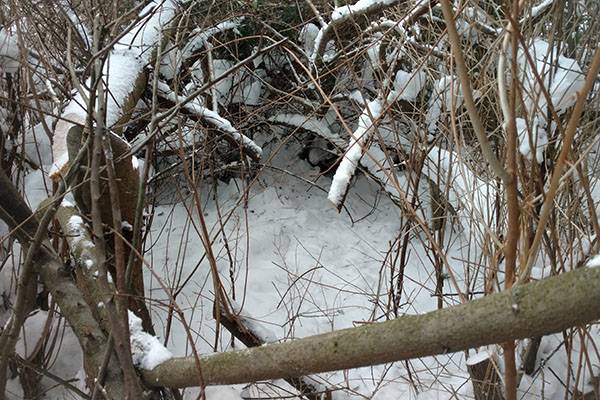
Last Updated on
Each year the rigors of the fall rut take their toll on any self-respecting buck. Sadly Mother Nature’s cruel timing of winter also doesn’t help either. When the bitter winds and piling snow start whipping in, especially right after these animals have just been through an ultra-marathon breeding season, many of them become even more stressed. The exhaustion of the rut, the lack of available food and the cold weather all combine to kill a lot of deer each year. Nature is cruel, but that being said, there are things we well meaning hunters can do about it.
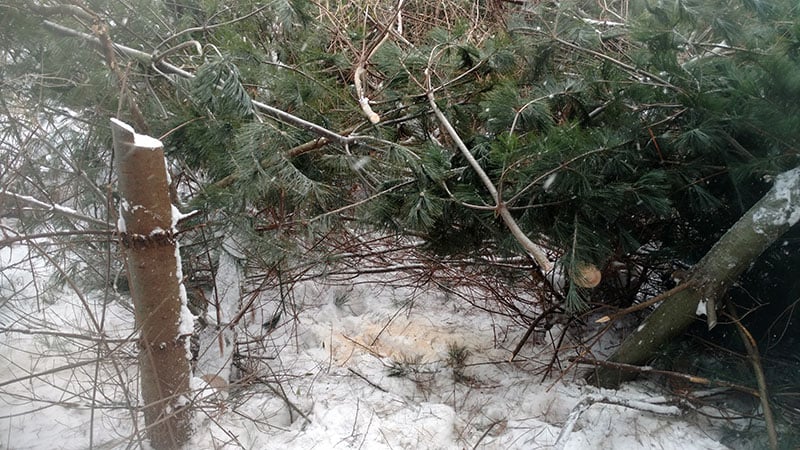
Habitat Improvement
Habitat improvement projects can be done any time of year, but the winter months are a wonderful time to dust off the old chainsaw, get outside and continue to get some fresh air instead of just hibernating on the couch. Each year at my farm we “hinge cut” many trees. Hinge cutting is a very effective way to increase cover and make the deer feel more secure. Look online to learn more about hinge cutting because there are several videos and articles about the subject. Basically hinge cutting is when someone uses a chainsaw to cut a sharp angle into a living tree approximately 3/4 of the way through. The object is to try to lay the tree on the ground, or lower it at least whereas the bark is still connected to the roots. If the outer bark is still connected someplace, the chances are very good that the tree will live. It should sprout a bunch of new growth at eye level for the deer instead of 40’ high. As this tree awakens again in the spring coming out of dormancy it will start to shoot up new growth off the now vertical trunk making it even more appealing for cover and a new food source.
So as I’m writing this article I am thawing out from hinge cutting outside tonight after work. I accomplished two things tonight by hinge cutting. I’m improving my bedding habitat for next year and the deer will be eating all the fresh brush that I drop down for them. In my neck of the woods, our local deer herd hears the winter chainsaw in equate it to me ringing the dinner bell. All of our deer are guaranteed to be in the thick of it, eating anything that I cut down for them tonight within a few days. They love sumac tops so that’s one of the first things I look for. I also like to hinge cut any low-growing bushes or less desirable trees. I hinge cut a lot of Autumn Olive which is an invasive bush that the deer will bed in and nibble on occasionally. Be sure to do research for your area and see what local trees bushes and shrubs at the experts recommend hinge cutting. I also like to hinge cut or completely eliminate any competing trees each year that are undesirable. I also hinge cut or completely remove anything that is competing with my nut and fruit trees.
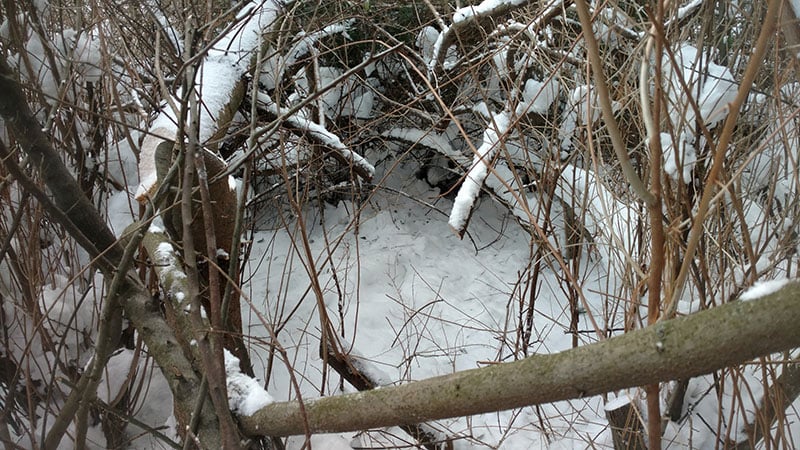
After hinge cutting everything that I think is undesirable, I will go into my mature pine stands and do what is called edge feathering. Edge feathering is simply dropping trees straight down into a field edge to create a softer transition area vs. all grass stopping abruptly into all pines, etc… By edge feathering pines I am creating massive wind breaks for the deer to hole up in during the winter as well as allowing the sunlight to penetrate the pine forest floor encouraging new growth at these areas. The nice thing about edge feathering is it can also act as a funnel. We trim specific trails through the feathered edges that we want the deer to access the fields from.
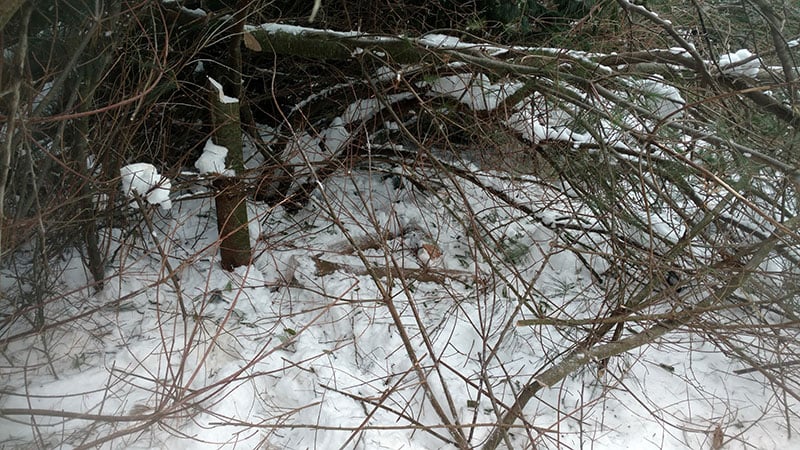
Supplemental Feeding
Many people also feed their wildlife throughout the winter months. Be sure to check local regulations. In my home state of Michigan, baiting deer is illegal during the offseason, but there are some laws about supplemental food programs. I do not know how other states operate but I’m sure they are all different. Supplemental feeding in a nutshell is simply just giving the deer extra feed. Most people simply dump shelled corn on the ground or use it corn feeder. I also know others who are willing to purchase apples, carrots, sugar beets, and other deer friendly foods to give them during the winter months. Other people also leave round bales of hay laying out for the animals to eat in the winter. I do know that everyone who has practiced supplemental winter feeding is usually rewarded with the health of their deer herd in the spring. Also, it’s always nice to find a couple of shed antlers near sites as a thank you for all the extra food.
Some people also experiment with trying to keep water holes open for the deer to have drinking water in the winter. This could be done from a bubbler in a pond, or solar powered heat tape, or a variety of things. The basic premise is just to keep a water source open and prevent it from freezing. One of my neighbors has a constant flow geothermal heating system, and he is always dumping water outback behind his house. I know the local deer come drink from it even on the coldest days in the winter.
Make Trails
I also spend a lot of time in the winter prepping trails for the next summer. Deer and other wildlife appear to be lazy. In reality, their survival depends on calorie conservation. Either way, they will use the trails that are created for them. I like to drive the truck back when I can, or get my hands on a snowmobile or tractor when the going gets tough. I make small trails between the bedding cover and food sources and you’d be amazed how quickly the animals start to use them. If I have access to the tractor long enough, I’ll scrape away snow in the fields exposing the hay, or corn or beans underneath. They’ll also take advantage of the easy pickin’s and have a feast in the scraped patch of field.
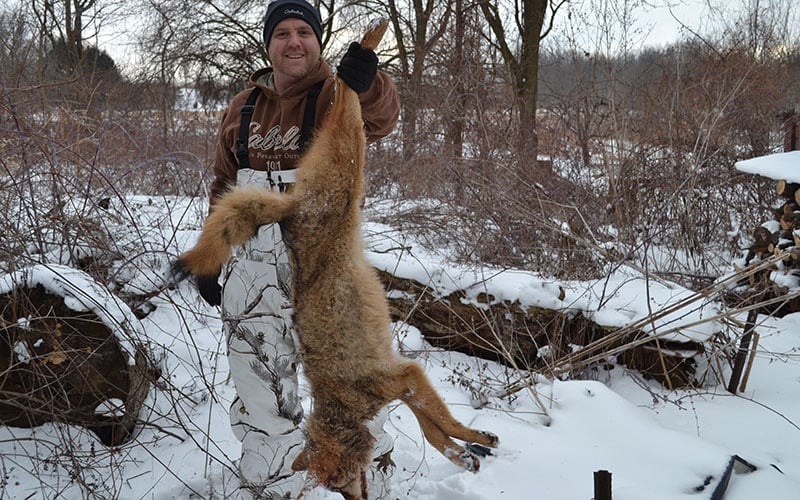
Eliminate Predators
Reference my past articles on coyote hunting and trapping. Here’s a Cliff’s Notes version – kill predators. Not only is winter predator hunting and trapping fun, it is important for the well being of the local deer and turkeys. Plus, after I started harassing the local coyotes, I noticed a bounceback in our rabbit population. My kids love hunting rabbits, so that’s a bonus.
Keep it Fun!
As with anything, be sure to check the local game laws before embarking on any sort of supplemental winter food or watering program. Hunting and habitat improvement are supposed to be fun, so getting into trouble with the authorities would ruin the experience. I also recommended talking with a local forestry expert about which trees to cut when hinge cutting or edge feathering. My rule is that if it produces nuts or fruit it is allowed to grow as tall as possible.




Leave a Reply